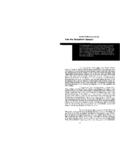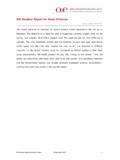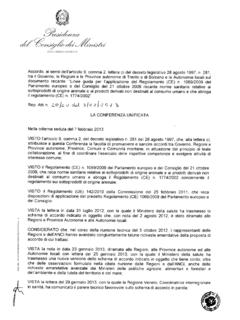Transcription of OIE Situation Report for Highly Pathogenic Avian …
1 OIE Situation Report for Avian influenza 28 February 2018 1 OIE Situation Report for Highly Pathogenic Avian influenza Latest update: 28/02/2018 The epidemiology of Avian influenza is complex. The virus constantly evolves and the behavior of each new subtype (and strains within subtypes), and the risks they present, can vary, as will the response in different countries. This Report presents an overview of historical and current disease events reported to the OIE by its Members. The epidemiology of the disease in the last 13 years was characterized by two main global panzootics.
2 The first panzootic wave started in 2004, peaked in 2006, and afterward the virus activity progressively decreased up to 2012. Since 2013 a second panzootic wave has been observed, with a maximal activity in 2015. Currently the second panzootic period is ongoing. The objective of this Report is to provide an historical background of HPAI epidemiology since 2005, to provide context to the current Situation and consider what might happen next. OIE Situation Report for Avian influenza 28 February 2018 2 Current Global Situation (as of 28 February 2018) 1.
3 Is the current Highly Pathogenic Avian influenza (HPAI) Situation exceptional and why? This section presents data for the current global epidemics since the re-emergence of HPAI in domestic birds in 2013 compared with previous years. It presents the cumulative data for the period from 2013 to present and highlights data for the month of January 2018 (as of 28 February). As shown in Table 1, the HPAI Situation in the past five years is considered truly exceptional for at least three reasons: 1) the substantial number of countries and territories affected by HPAI in domestic birds; 2) the substantial number of outbreaks (affected farms, villages, or backyards) in this period; and 3) the high diversity of circulating subtypes during the period, which makes control and eradication complex.
4 In February 2018, 11 countries and territories (Cambodia, China [People s Rep. of], Chinese Taipei, India, Iraq, Korea [Rep. of], Mexico, Netherlands, Saudi Arabia, South Africa and Vietnam) in 3 world regions (Africa, Americas and Asia) were still affected. January 2013- February 2018 February 2018 Number of countries and territories affected by HPAI in domestic birds 68 11 Number of outbreaks reported in domestic birds 6,946 37 Number of subtypes reported in domestic birds 12 6 Table 1. Selected characteristics of the current global epizootic of HPAI in domestic birds, for the entire epizootic (2013-2018) and the latest Situation (February 2018) 2.
5 What are the differences and similarities with the global epidemics which occurred in 2005-2012? This section presents a comparison of the data between the previous global epidemics, which occurred from 2005 to 2012, and the current global epidemics, which have been ongoing since 2013. As shown in Table 2, in the current epidemics: 1) the number of countries and territories with domestic birds affected has been slightly higher than in the previous global epidemics; 2) the number of outbreaks reported in domestic birds has been comparable with the previous global epidemics; and 3) the number of circulating subtypes reported in domestic birds has been much higher than in the previous global epidemics.
6 The main difference between the two global epidemics is the number of circulating subtypes in domestic birds, as the number of subtypes reported in the past five years was three fold higher than the number of subtypes reported in the previous global HPAI epidemics. OIE Situation Report for Avian influenza 28 February 2018 3 January 2005- December 2012 January 2013- January 2018 Number of countries and territories affected by HPAI in domestic birds 65 68 Number of outbreaks reported in domestic birds 8,345 6,946 Number of subtypes reported in domestic birds 4 12 Table 2.
7 Selected characteristics of the current global epizootic of HPAI in domestic birds (2013-2018) and the previous global epizootic (2005-2012) 3. What are the geographical characteristics of the countries with domestic birds affected? This section presents information about the geographic distribution of the disease and the reported subtypes. The data are presented using the UN regional distribution. It presents the cumulative distribution of the disease and subtypes for the period from 2013 to present and highlights the distribution for the month of February 2018 (as of 28 February).
8 As shown in Figure 1, in January 2013 January 2018, all regions were affected by HPAI outbreaks in domestic birds, with 68 countries and territories reporting the disease present at least once. The most affected regions were Europe and Asia. Several countries in Africa were affected, while in the Americas the disease was present in the northern part of the region and almost absent from its central and southern part. Figure 1. Countries and territories affected at least once by HPAI outbreaks in domestic birds, January 2013- January 2018. During the period January 2013 January 2018, 12 different influenza A subtypes were reported, as shown in Table 3.
9 Europe reported the highest virus diversity (7 subtypes), followed by Asia and the Americas (6 subtypes each), Africa (3 subtypes), and Oceania (1 subtype). Subtypes H5N1, H5N2 and H5N8 were the most geographically widespread and commonly reported in four out of five regions. OIE Situation Report for Avian influenza 28 February 2018 4 Region Subtypes Africa H5N1, H5N2, H5N8 Americas H5N1, H5N2, H5N8, H7N3, H7N8, H7N9 Asia H5N1, H5N2, H5N3, H5N6, H5N8, H7N9 Europe H5N1, H5N2, H5N5, H5N6, H5N8, H5N9, H7N7 Oceania H7N2 Table 3. HPAI subtype distribution at regional level in domestic birds (January 2013- January 2018) The distribution of the most recent HPAI outbreaks in domestic birds is shown in Figure 2.
10 *Data provided by Morocco Figure 2. HPAI outbreaks reported for February 2018 in domestic birds (N=33) Thirty-seven new HPAI outbreaks in domestic birds were reported in February 2018, in Africa, Asia, the Americas and Europe, involving 6 different subtypes. The countries and territories reporting new outbreaks and the aggregated number of poultry killed and disposed of is presented in Table 4. Region Count of countries and territories reporting new outbreaks List of countries and territories List of Strains Aggregated count of poultry killed and disposed of Africa 1 South Africa.















